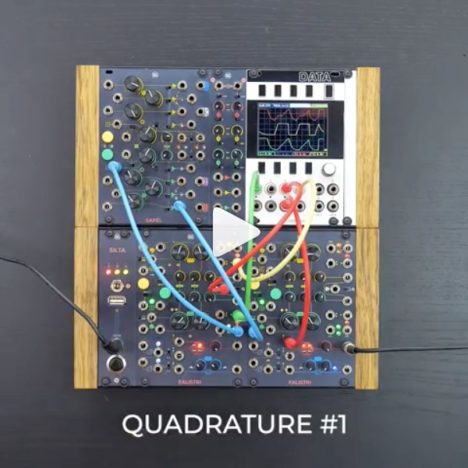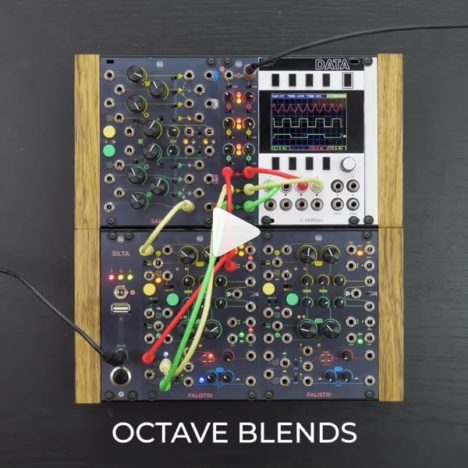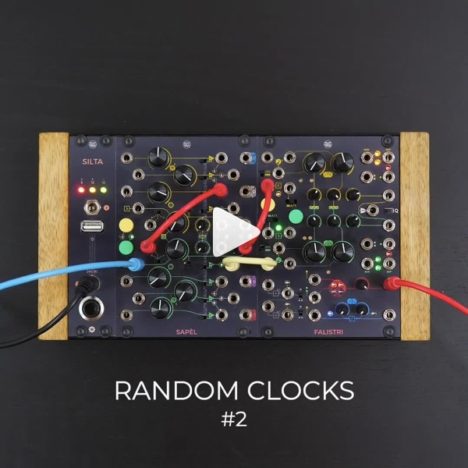- EURORACK
- CUNSA – Sound Seasoning
- CGM – Creative Mixer Series
- BRENSO – Entangled Sound Sources
- USTA – The Voltage Score
- FALISTRI – Movement Manager
- SAPÈL – Tamed Random Source
- FUMANA – Dual 16 Bands Spectral Editor
- 321 – Scale + Flip + Shift + Combine
- 333 – ProAudio Sum & Distribution
- SILTA 2016 – discontinued
- SEI – trunk lines – discontinued
- UNO – foldable case
- PLUS – modular modular case
- ACCESSORIES
- KNOBS
- RESOURCES
- RESELLERS
- ABOUT
- ACCOUNT
Month / September 2019
-
Random Clocks #1
Random trigs with some SAPÈL self-patching! In this patch we’ll use the yellow main clock out to control the green one, then we’ll add some cross-patching within the yellow section to achieve some unpredictability.
2019-09-23 -
Ratcheting-Like Effect #3
What about trying some random repetitions? In this patch, a random ratcheting-like effect is obtained by using SAPÈL’s Random Clock to trig the envelope controlling the amplitude, while the clock density (or the ratcheting number) is varied through cross-patching.
2019-09-23 -
Bouncing Ball
In this video, we’ll see how to recreate the classic ‘Bouncing Ball’ patch – using only two FALISTRI!
2019-09-09 -
Quadrature #1
Patch the EOR output into the first frequency divider input, mix all the (bipolar!) outputs into your 321 and fatten up your sound with every possible blend of three octaves!
2019-09-03 -
Octave Blends
Patch the EOR output into the first frequency divider input, mix all the (bipolar!) outputs into your 321 and fatten up your sound with every possible blend of three octaves!
2019-09-03 -
Random Clocks #2
Clock randomness and dummy cables! Normally, the external clock input doesn’t handle fluctuating voltages as trigs. Fear not! You can still use the Gate / CV in to trig your SAPÈL! This works together with the internal clock: if you want total randomness, you can use a dummy cable to block the clock generation and use only the external CV.
2019-09-03 -
FUMANA Feedback #3
What about a FUMANA Feedback AND a spectral transfer – at the same time? In this patch, we’ll use the feedback trick to emphasize the modulation of an oscillator over a pink noise. It works great when vocoding, too!
2019-09-03
Categories
Recent Posts
- CUNSA v/s FUMANA: The same patch on two different filters!
- Subharmonic formant arpeggios patch breakdown: a classic Falistri patch!
- Memes aside, let’s make Sandstorm by Darude on our Frap Tools system
- Four tips to use CUNSA as a sound source (including ringing and additive synthesis)
- ‘Glass sounds‘ analog through-zero FM patch breakdown with Brenso and Cunsa!






